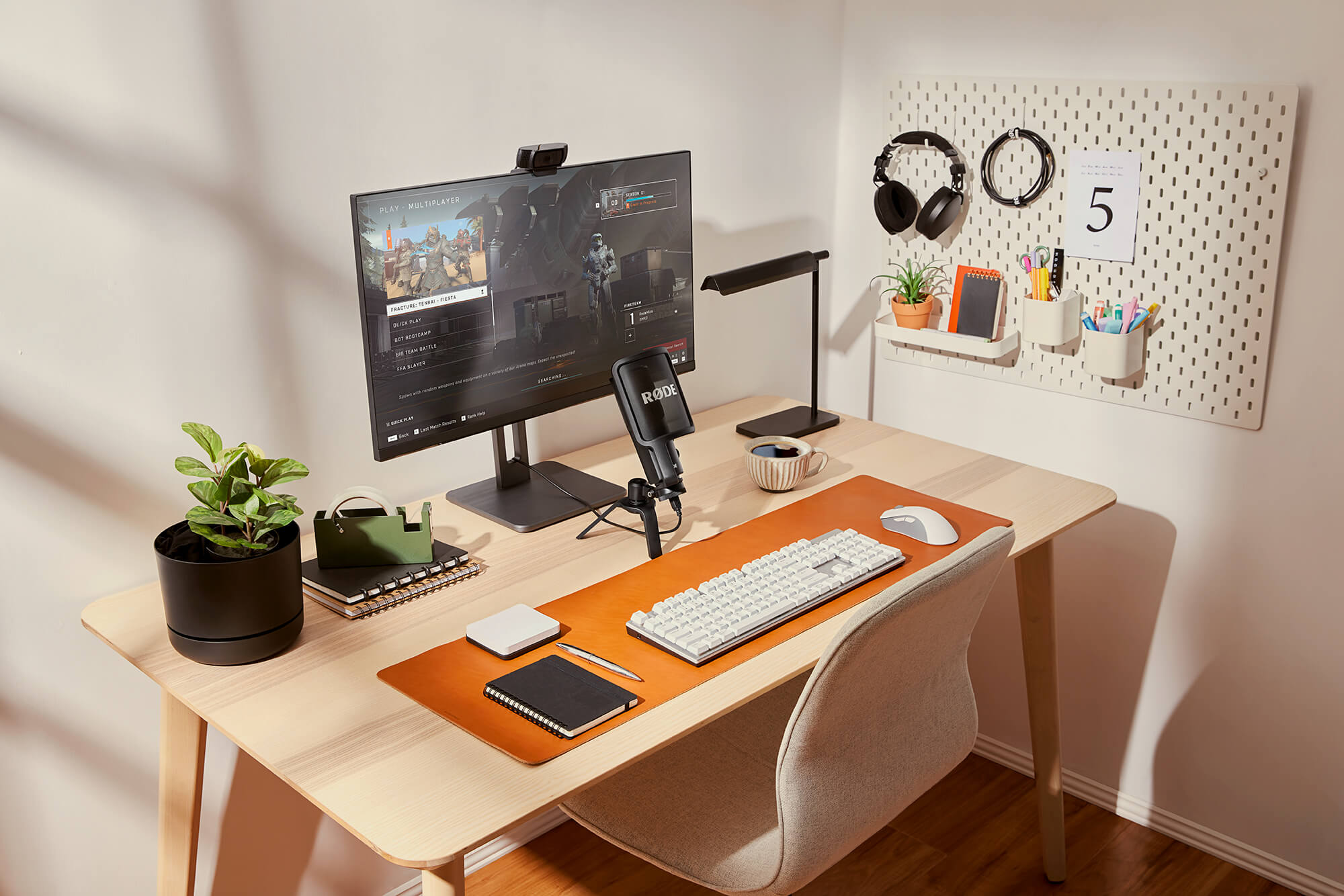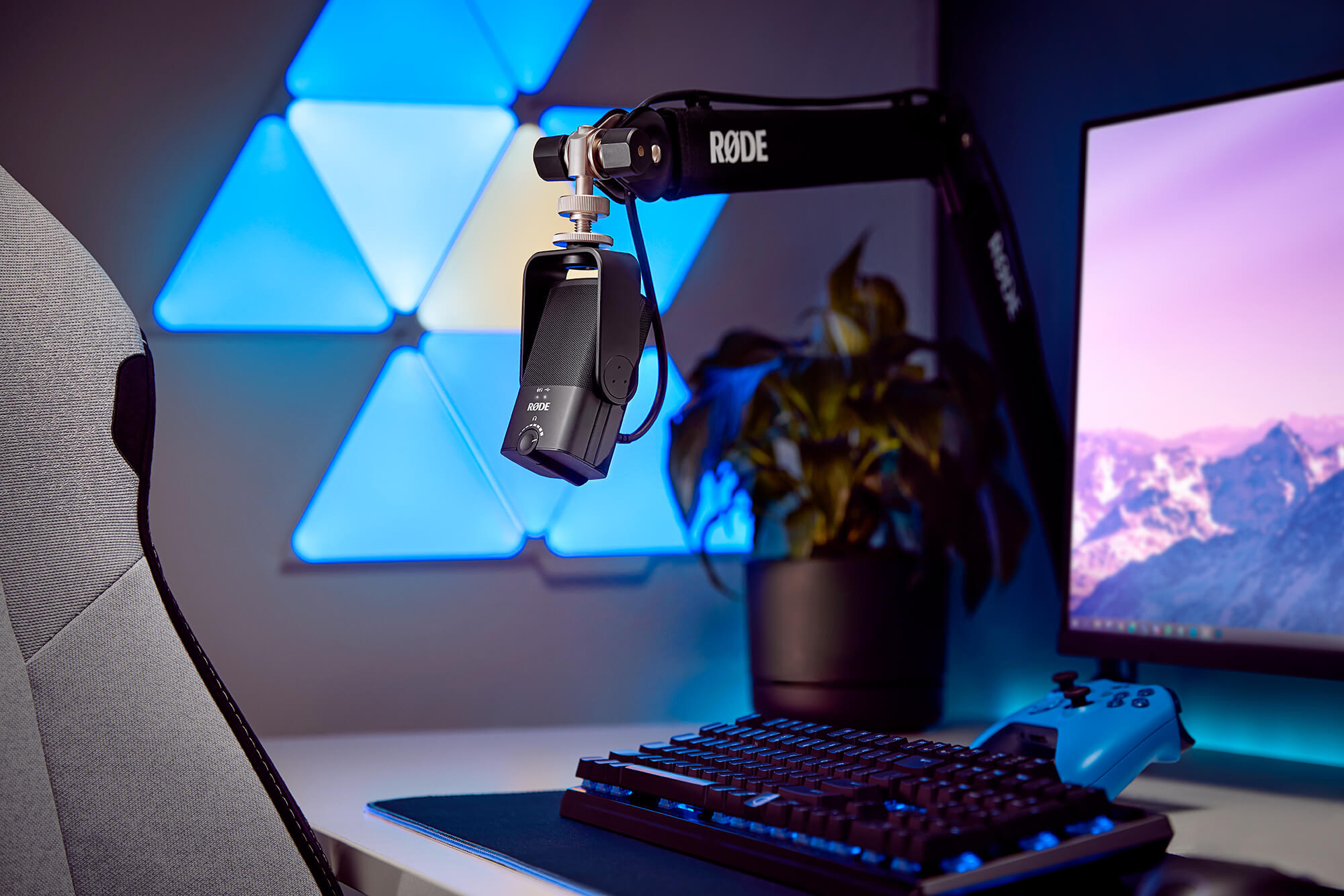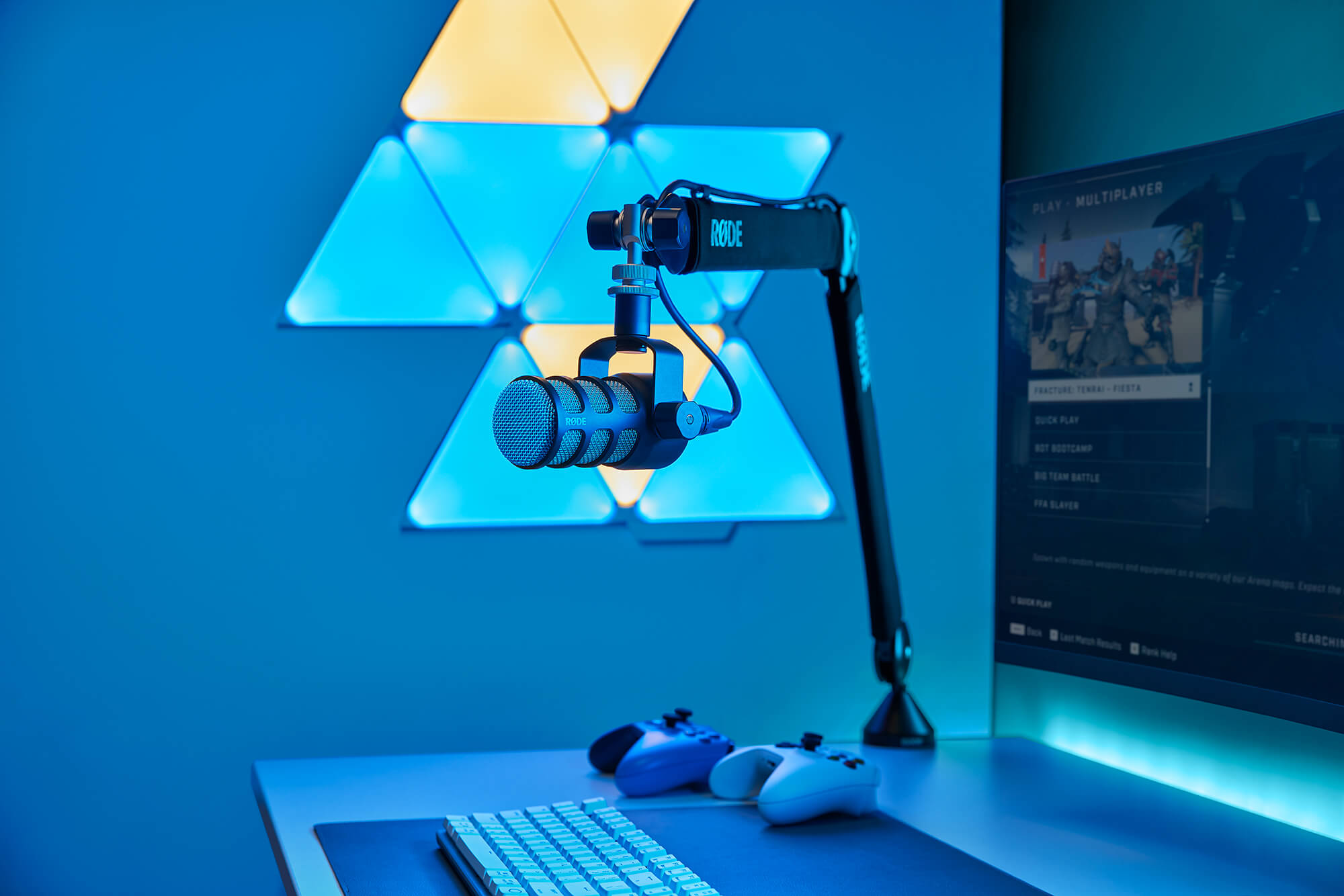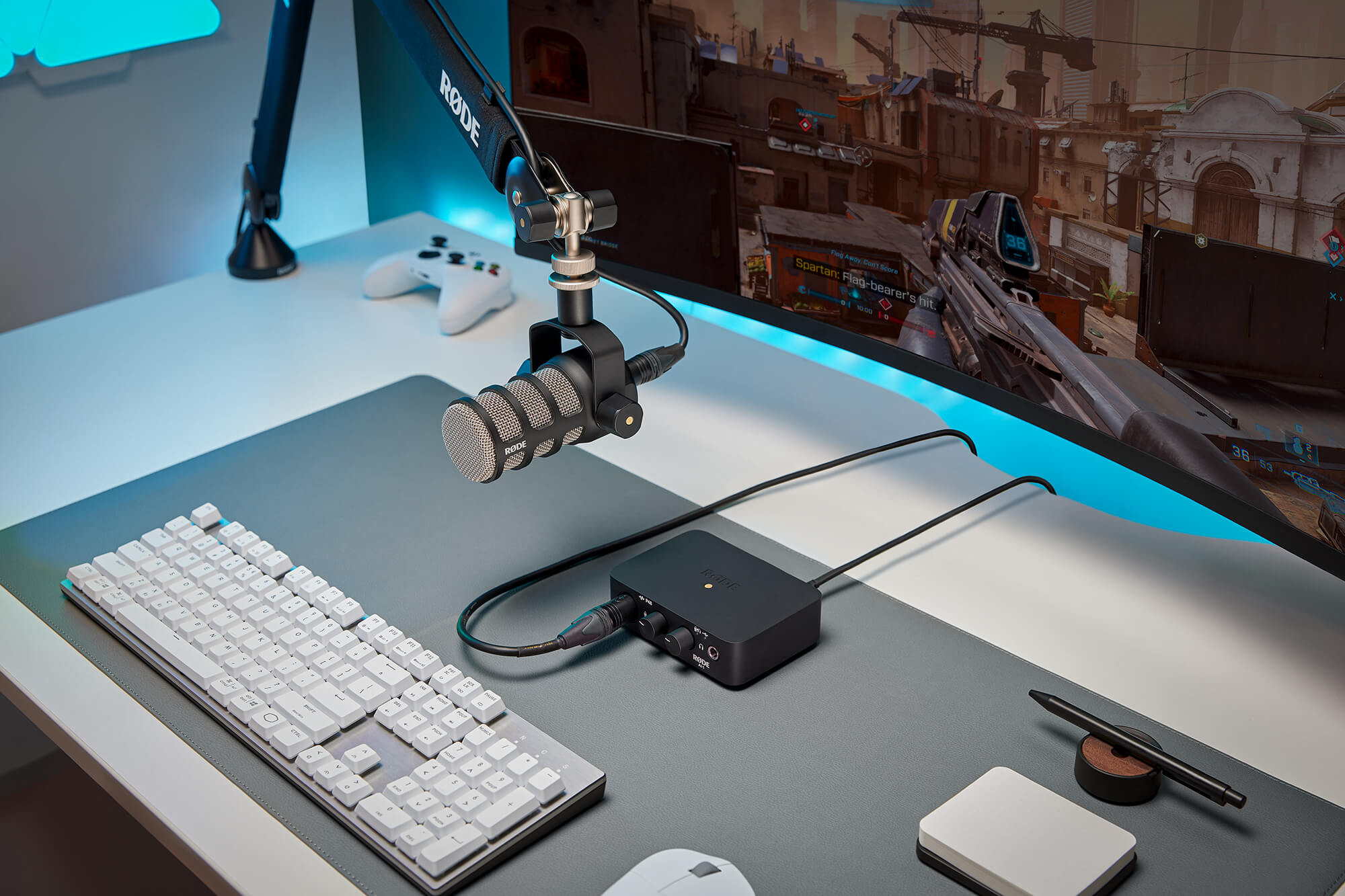Posted by Rode Microphones on 11th Jul 2022
XLR or USB Microphones: Which is the Best for Gaming and Streaming?
Whether you’re looking to upgrade your streaming setup or purchase your very first gaming mic, it's hard to look past one of the most important questions – XLR or USB microphones: which is the best for gaming and streaming?
While XLR mics have long been the gold standard for broadcast-quality audio, USB mics have become more powerful and feature-packed over the year and are a popular choice amongst gamers and streamers.

Improve your gaming and streaming audio with a USB or XLR mic
Benefits of USB Microphones
The most obvious upside of a USB mic its simplicity when it comes to connectivity. The ability to plug the mic directly into your computer as you would a mouse, keyboard or any other USB device makes it simple and easy for streamers looking to upgrade their audio without the hassle of complex setups.
Every microphone requires three distinct components to operate: the mic itself to capture the sound, a preamplifier or “preamp” to boost or amplify the signal, and an interface that converts the analog signal to a digital signal so it can communicate with your computer or device.
In a USB microphone, all three components are integrated into a single microphone body, allowing you to simply plug it into your computer or device, select it as the audio input device and start recording or broadcasting in just moments.
USB mics are also powered straight from the computer or device's USB port, eliminating the need for an external power supply. This also makes them (generally) more affordable than their XLR counterpart, due to the lack of additional costs involved with purchasing a separate audio interface and cables as well as the mic itself to start recording.

he NT-USB Mini provides a crisp, clean sound when gaming or streaming
RØDE USB mics like the Podcaster, NT-USB and the NT-USB Mini all offer studio-quality sound in a simple plug-and-play format. They also come equipped with a 3.5mm headphone output, so you can plug a pair of headphones directly into the mic for zero-latency monitoring to hear your microphone audio in in real-time without delay.
The NT-USB Mini is a great choice for streaming. In addition to being compact and easy to use, this studio-quality condenser mic is compatible with our free RØDE Connect software, which gives you access to powerful digital signal processing and seamless integration with applications such as Xsplit and OBS for the perfect streaming audio. RØDE Connect also allows you to connect up to three NT-USB Minis (or compatible RØDE USB mics) to a single computer, making it incredibly easy to record or stream with multiple USB microphones.
Benefits of XLR Microphones
XLR mics, on the other hand, require an external audio interface to bridge the microphone to a computer or device, making them a little less portable and slightly more complex to set up than USB microphones.
Although you’ll need more equipment with an XLR microphone setup, there are benefits to choosing this route.
Firstly, having a separate microphone and audio interface means you have many more options when it comes to microphone choice, allowing you to explore different types to suit your voice and audio setup.
Most audio interfaces offer more features than you would typically find on a USB microphone, such as hands-on gain controls and level metering, extra inputs as well as inputs for instruments, outputs for speakers, and more. They also generally feature better quality preamps and A/D converters than found in USB microphones, giving you improved fidelity and flexibility when recording.

The PodMic/PSA1+ combo is a streamer's delight
It’s also much easier to upgrade the individual components of an XLR mic setup as your career progresses over time. USB mics are limited by their design, as the microphone and interface are housed in the same enclosure, meaning you can’t mix and match each component. With an XLR mic setup, you can choose your microphone and interface to taste, making to find the best combination to suit your voice and setup.
For example, you may want to start off with a simple setup like a PodMic and AI-1, then start exploring the world of condenser microphones like the NT1-A, and eventually progress to a more powerful audio mixer like the RØDECaster Pro II. With an XLR mic setup, the options are endless.
XLR or USB: Which One is the Best for Gaming and Streaming?
It's important to point out that both USB and XLR mics are perfectly viable options for improving your audio significantly over any in-built microphone when gaming and streaming.
Both USB and XLR mics are available in dynamic and condenser variants, so you’ll be able to choose the best option that suits your setup and streaming environment the best.
If you’re looking for an easy-to-use option that’s convenient and requires little-to-no preconditional audio knowledge, a USB microphone is the obvious choice. With power drawn from your computer or device, as well as no need for an external preamp and interface, it’s a super portable and easy to use solution that allows you to game or stream from almost anywhere. They are great for those who are starting out and looking to upgrade their streaming audio without needing technical audio knowledge.
If you’re after a setup that offers you more control over how you sound, as well as the flexibility to upgrade each component gradually, then an XLR mic setup is the way to go. Although you’ll need an additional audio interface in to bridge your XLR mic to the computer, you’ll have much more control, as well as the ability to tweak and upgrade each component of the setup (mic, preamp and interface) as your career progresses, making it a great long-term choice for streaming.

The NT-USB Mini provides a crisp, clean sound when gaming or streaming
Both USB and XLR mics are great choices, but it depends on your intended use-case and how much you value portability and ease-of-use:
If you’re starting out and looking for a convenient and easy-to-use option that requires little to no prior audio knowledge, opt for a USB mic.
Looking for a great RØDE USB mic for streaming? Check out the Podcaster, NT-USB or NT-USB Mini.
If you’re a seasoned campaigner, or if you’re looking for a more customisable setup that you can evolve over time, an XLR mic setup is a great choice.
Looking for a great RØDE XLR mic setup for streaming? Try pairing the AI-1 audio interface with any of the following RØDE XLR mics: PodMic, Procaster, Broadcaster, NT1.


